Mazen Omar Hasna
3D Uplink Channel Modeling of UAV-based mmWave Fronthaul Links for Future Small Cell Networks
Mar 27, 2022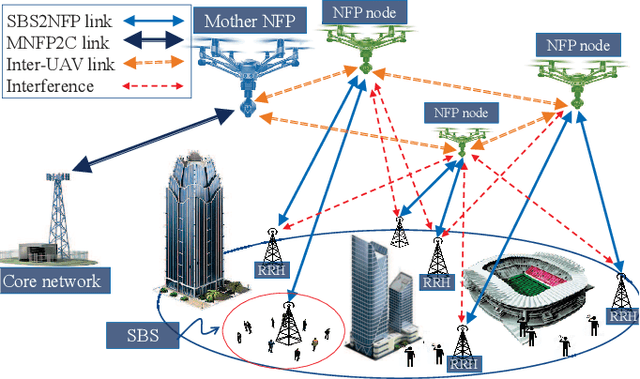
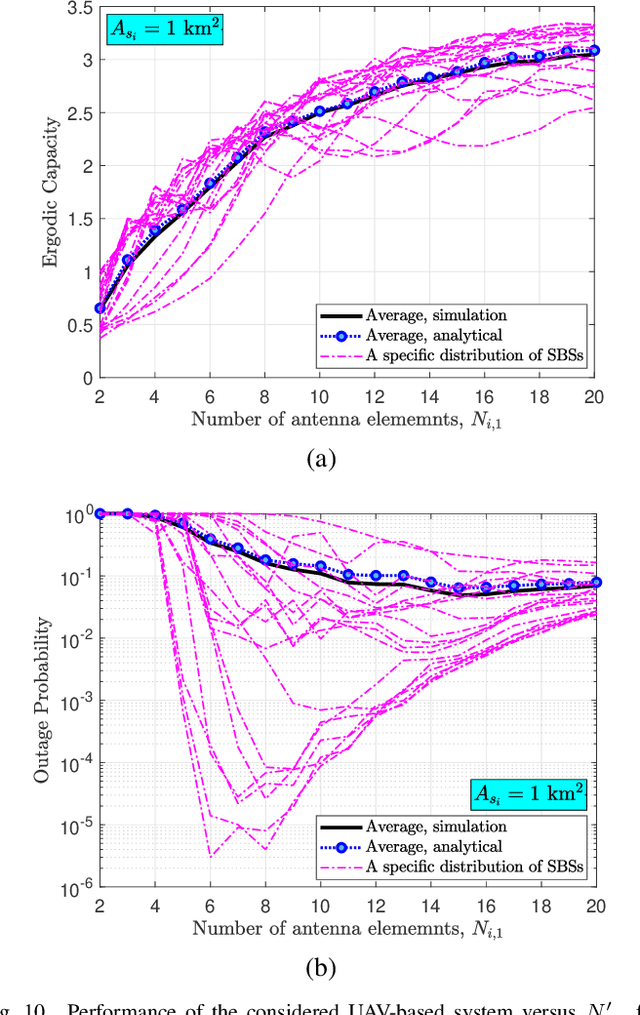
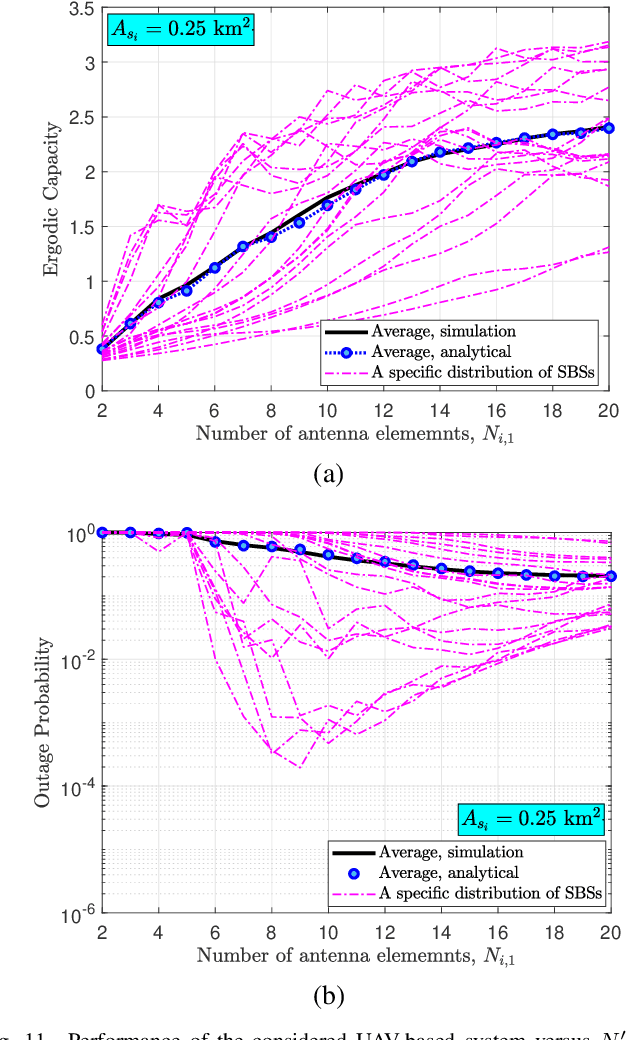
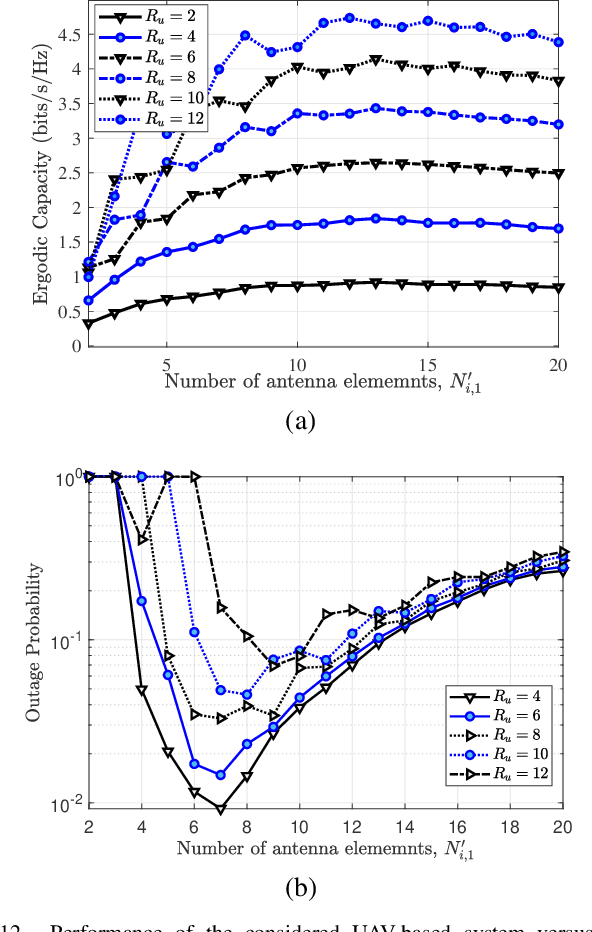
Abstract:In this study, we consider an unmanned aerial vehicle (UAV)-assisted heterogeneous network that is offered as a cost-effective and easy to deploy solution to solve the problem related to transferring traffic of distributed small cells to the core network. For any given distribution of small cell base stations (SBSs), we first characterize an accurate millimeter wave (mmWave) channel model for SBS to networked flying platform (NFP) by taking into consideration real parameters such as UAV's vibrations, distribution of SBSs, position of UAVs in the sky, real three-dimensional (3D) antenna pattern model provided by 3GPP along with interference caused by antenna side lobes and frequency reuse. Then, for the characterized channel, we derive an analytical closed-form expression for the end-to-end signal-to-noise plus interference ratio (SINR). Based on that, we derive the closed-form expressions for the outage probability and channel capacity of the considered UAV-based mmWave uplinks. The accuracy of the derived analytical expressions is verified by Monte Carlo simulations. Finally, we investigate the effects of different channel parameters such as antenna pattern gain, strength of UAV's vibrations, UAVs' positions in the sky, distribution of SBSs, and frequency reuse on the performance of the considered UAV-based uplink channel in terms of average capacity and outage probability.
Enabling Long mmWave Aerial Backhaul Links via Fixed-Wing UAVs: Performance and Design
Mar 15, 2022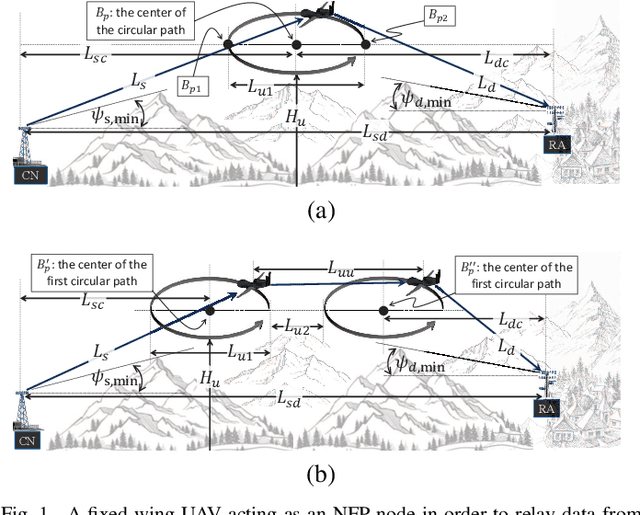
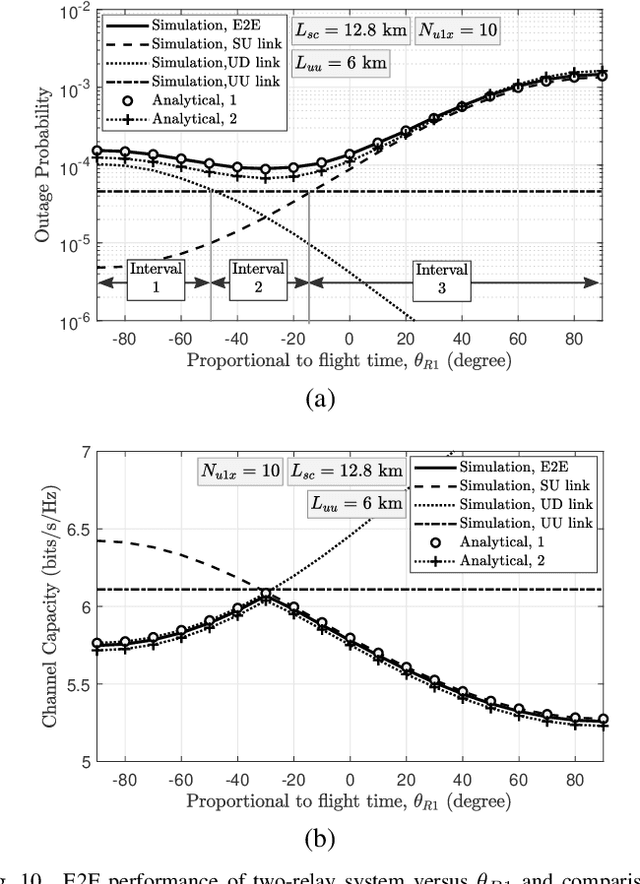
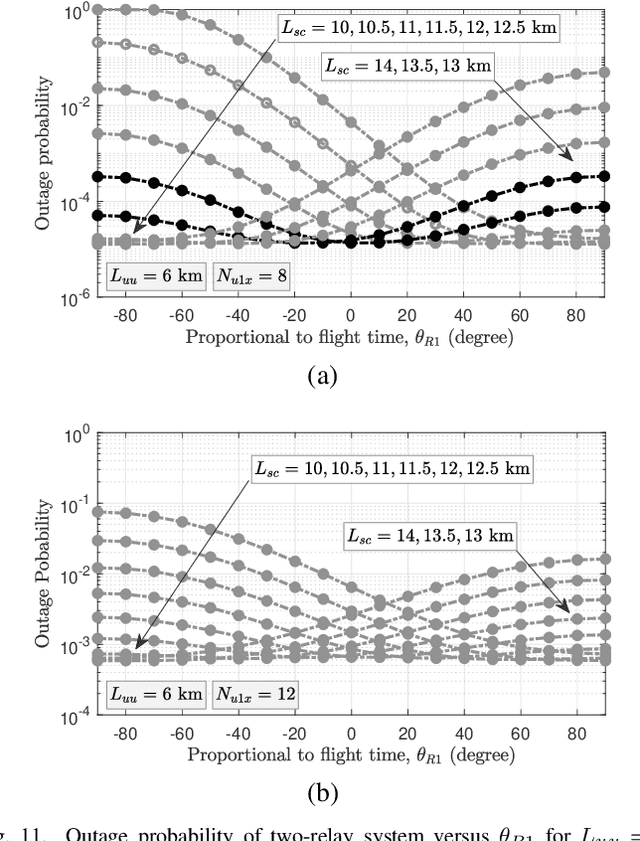
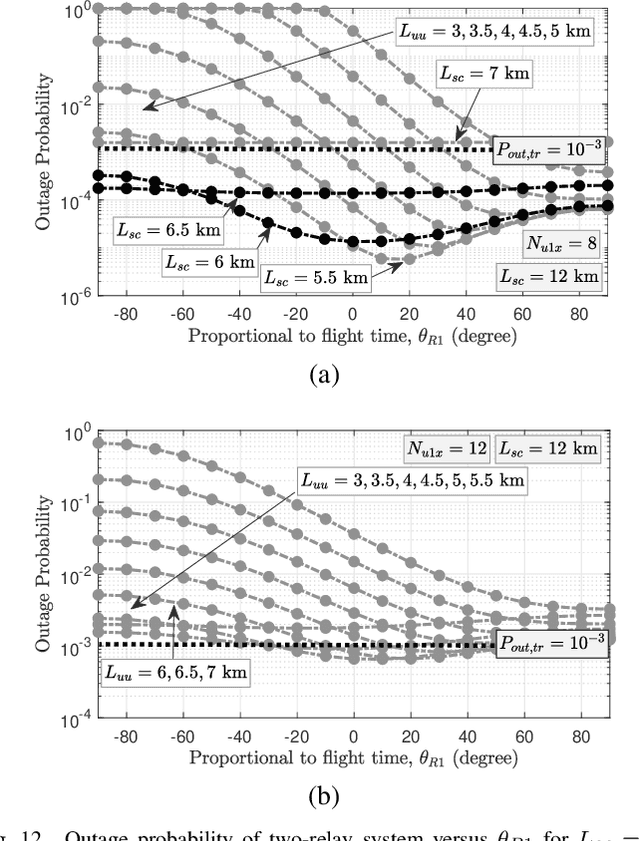
Abstract:We propose a fixed wing unmanned aerial vehicles (UAV)-based millimeter wave (mmWave) backhaul links, that is offered as a cost effective and easy to deploy solution, to connect a disaster or remote area to the nearest core network. First, we fully characterize the single relay fixed-wing UAV-based communication system by taking into account the effects of realistic physical parameters, such as the UAV's circular path, critical points of the flight path, heights and positions of obstacles, flight altitude, tracking error, the severity of UAV's vibrations, the real 3D antenna pattern, mmWave atmospheric channel loss, temperature and air pressure. Second, we derive the distribution of the signal-to-noise ratio (SNR) metric, which is based on the sum of a series of Dirac delta functions. Using the SNR distribution, we derive closed-form expressions for the outage probability and the ergodic capacity of the considered system as a function of all system parameters. To provide an acceptable quality of service for longer link lengths, we extend the analytical expressions to a multi-relay system. The accuracy of the closed-form expressions are verified by Monte-Carlo simulations. Finally, by providing sufficient simulation results, we investigate the effects of key channel parameters such as antenna pattern gain and flight path on the performance of the considered system; and we carefully analyze the relationships between these parameters in order to maximize the average channel capacity.
A Study of Multihop mmW Aerial Backhaul Links
Mar 08, 2022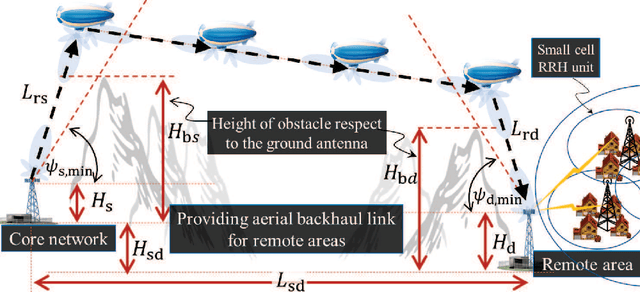
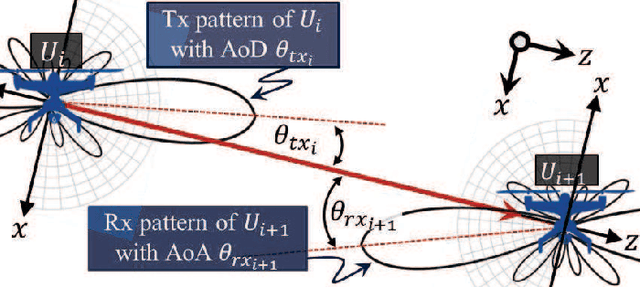

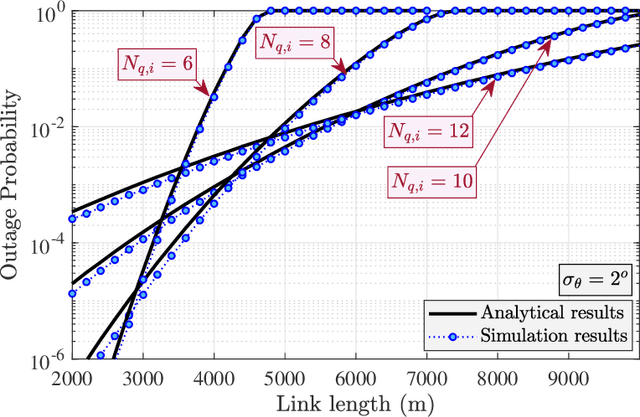
Abstract:The main contribution of this paper is to analyze a long networked flying platform (NFP)-based millimeter wave (mmWave) backhaul link that is offered as a cost effective and easy to deploy solution to connect a disaster or remote area to the nearest core network. For this aim, we characterize the backhaul channel as a function of realistic physical parameters such as heights and distances of obstacles along the route, flight altitude and the intensity of NFPs' vibrations, the real 3D antenna pattern provided by 3GPP, etc. For the characterized channel, we derive an analytical closed-form expression for the outage probability. Finally, using the obtained results, we provide a fast algorithm for the optimal parameter design of the considered system that minimizes the cost.
Long mmWave Backhaul Connectivity Using Fixed-Wing UAVs
Mar 08, 2022



Abstract:This paper discusses the analysis of a fixed-wing unmanned aerial vehicle (UAV)-based millimeter wave (mmWave) backhaul link, that is offered as a cost-effective and easy deploy the solution to connect a disaster or remote area to the nearest core network. We present the optimal design of a relay system based on fixed-wing UAV, taking into account the actual channel parameters such as the UAV vibrations, tracking error, real 3GPP antenna pattern, UAV's height, flight path, and the effect of physical obstacles. The performance of the considered system is evaluated in terms of outage probability and the channel capacity while taking into account the impact of the system parameters such as optimal selection of UAV flight path and antenna patterns.
Modulating Retroreflector Based Free Space Optical Link for UAV-to-Ground Communications
Feb 26, 2022


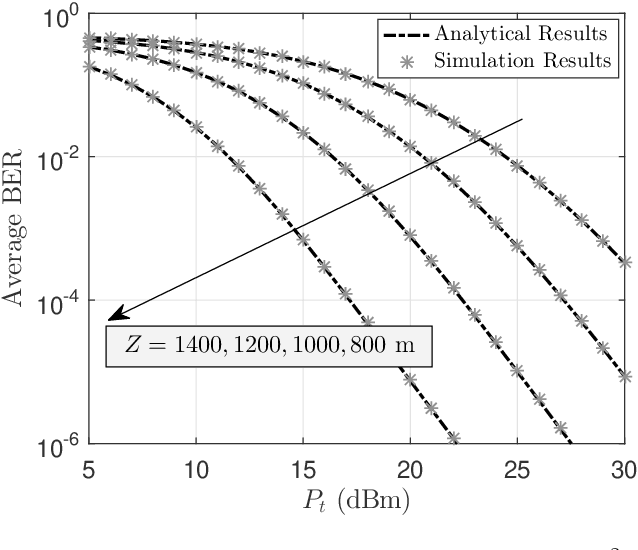
Abstract:Weight reduction and low power consumption are key requirements in the next generation of unmanned aerial vehicle (UAV) networks. Employing modulating retro-reflector (MRR)-based free space optical (FSO) technology is an innovative technique for UAV-to-ground communication in order to reduce the payload weight and power consumption of UAVs which leads to increased maneuverability and flight time of UAV. In this paper, we consider an MRR-based FSO system for UAV-to-ground communication. We will show that the performance of the considered system is very sensitive to tracking errors. Therefore, to assess the benefits of MRR-based UAV deployment for FSO communications, the MRR-based UAV FSO channel is characterized by taking into account tracking system errors along with UAV's orientation fluctuations, link length, UAV's height, optical beam divergence angle, effective area of MRR, atmospheric turbulence and optical channel loss in the double-pass channels. To enable effective performance analysis, tractable and closed-form expressions are derived for probability density function of end-to-end signal to noise ratio, outage probability and bit error rate of the considered system under both weak-to-moderate and moderate-to-strong atmospheric turbulence conditions. The accuracy of the analytical expressions is verified by extensive simulations. Analytical results are then used to study the relationship between the optimal system design and tracking system errors.
A Distributed Approach for Networked Flying Platform Association with Small Cells in 5G+ Networks
Apr 21, 2017


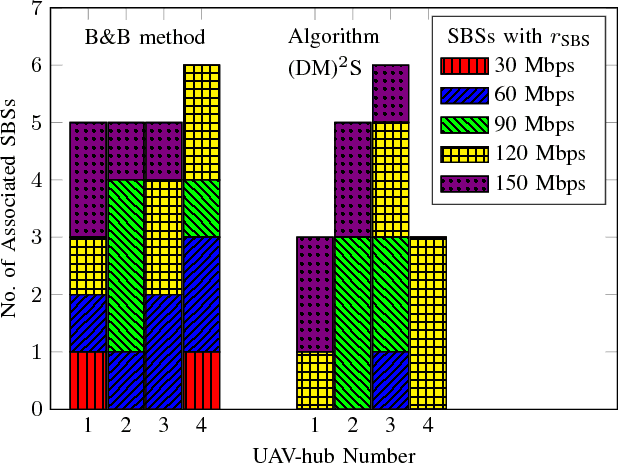
Abstract:The densification of small-cell base stations in a 5G architecture is a promising approach to enhance the coverage area and facilitate the ever increasing capacity demand of end users. However, the bottleneck is an intelligent management of a backhaul/fronthaul network for these small-cell base stations. This involves efficient association and placement of the backhaul hubs that connects these small-cells with the core network. Terrestrial hubs suffer from an inefficient non line of sight link limitations and unavailability of a proper infrastructure in an urban area. Seeing the popularity of flying platforms, we employ here an idea of using networked flying platform (NFP) such as unmanned aerial vehicles (UAVs), drones, unmanned balloons flying at different altitudes, as aerial backhaul hubs. The association problem of these NFP-hubs and small-cell base stations is formulated considering backhaul link and NFP related limitations such as maximum number of supported links and bandwidth. Then, this paper presents an efficient and distributed solution of the designed problem, which performs a greedy search in order to maximize the sum rate of the overall network. A favorable performance is observed via a numerical comparison of our proposed method with optimal exhaustive search algorithm in terms of sum rate and run-time speed.
 Add to Chrome
Add to Chrome Add to Firefox
Add to Firefox Add to Edge
Add to Edge